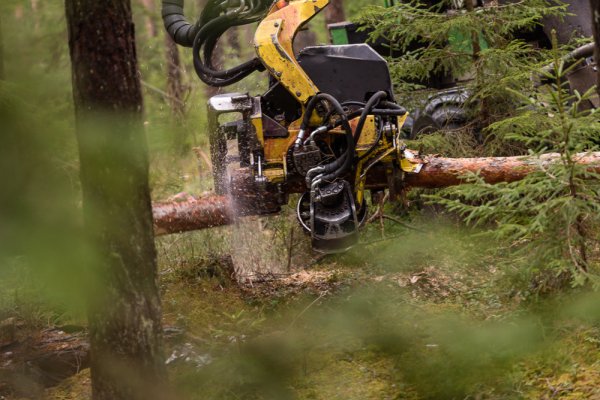Exploring Ways to Reduce Fuel Consumption in Logging
Activities to reduce the release of carbon dioxide and other greenhouse gases into the atmosphere are playing an increasingly important role in reducing the global warming of our planet. JSC “Latvia's State Forests” (LVM), in cooperation with the Latvian State Forestry Institute “Silava”, conducted a study to identify ways to reduce fuel consumption in timber processing.
Why is it relevant?
When fuel is burnt, carbon dioxide, nitrogen oxide, and other substances that are stored in the subsoil are released into the atmosphere, polluting the atmosphere and retaining heat in the space. The inability of planetary ecosystems to absorb excess carbon dioxide increases the thickness of the greenhouse gas blanket, affecting the conditions known as “climate change”. They present new risks and challenges for forest management. In addition to tackling global issues, reducing fuel consumption also has a practical role – cost reduction. The less fuel is spent on each cubic metre of wood, the lower the cost.
Conclusions
The study used information from 1180 felling sites that was recorded in harvester working time files to determine fuel consumption.
In the photo: Harvester fuel consumption in final felling
“Fuel consumption per m3 decreases with increasing the volume of felled trees, which results in higher harvester productivity. The study concluded that forest stands need to be thinned at an early stage of growth, so that tree trunks can be thicker as soon as possible. This will reduce the production costs of timber, starting already with thinning. Moreover, we obtain more expensive timber from thicker trunks. This way, we can reduce production costs and increase revenue, unless there is high demand and high price of timber with narrower annual rings on the market,” says Jānis Gercāns, LVM Logging Quality Manager.
The study found that fuel consumption per m3 produced is inversely proportional to productivity – fuel consumption decreases per m3 as harvester productivity increases. Therefore, in addition to the positive effect of thinning of thicker trees or forest stands on the productivity of a harvester, the importance of skills of operators should also be taken into account.
In the photo: Changes in harvester productivity in final felling after training
“After training, the productivity of harvester operators increases. This has a positive effect on the reduction of wood preparation costs. However, in this study, fuel consumption per hour of work associated with increased harvester use rose slightly as operator productivity increased. However, training provides the opportunity to acquire skills that will result in lower fuel consumption per m3 produced,” explains LVM Logging Quality Manager.
Reducing fuel consumption has a positive impact on both global climate issues and practical business by reducing costs. Reducing fuel consumption in timber production is possible by skilfully managing forest stands throughout their life cycle and investing resources in staff training.
With a view to developing high-value and sustainable forest management, LVM regularly collaborates with scientists to determine how forestry decisions affect the quality of future forest stands.



